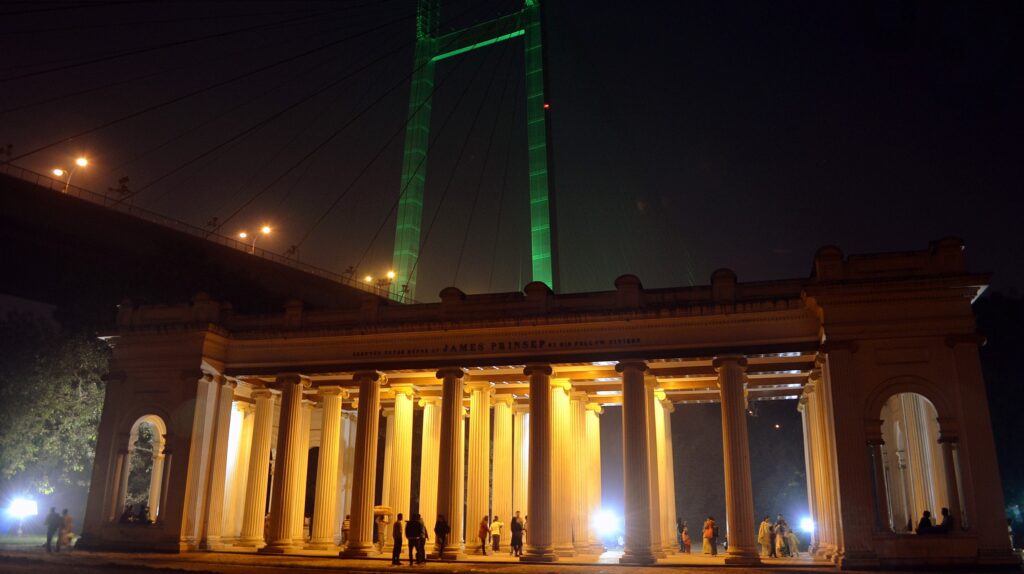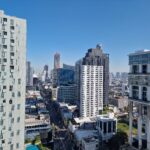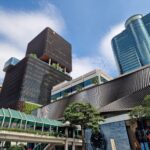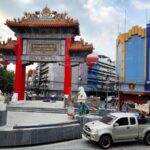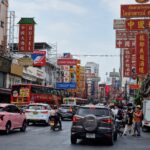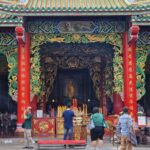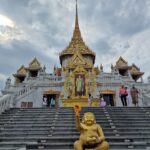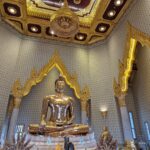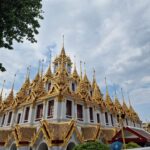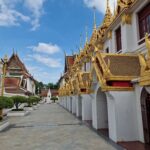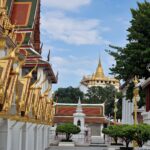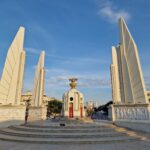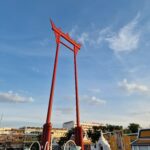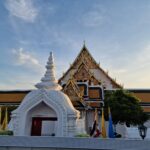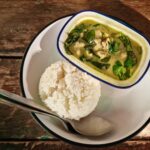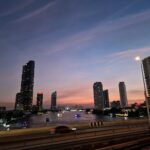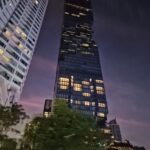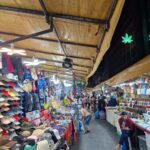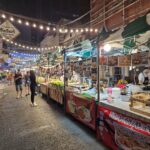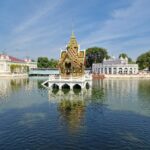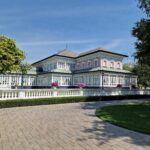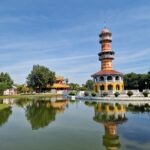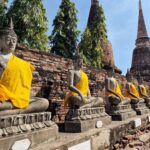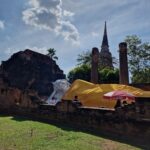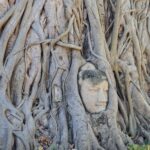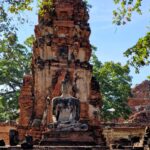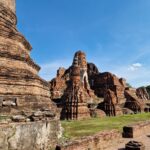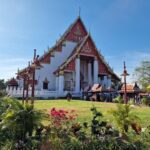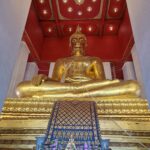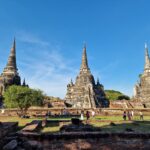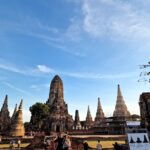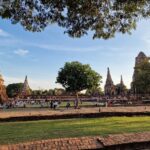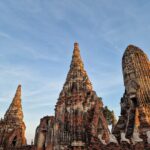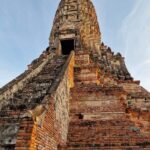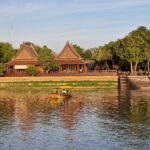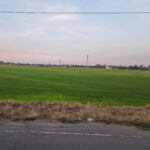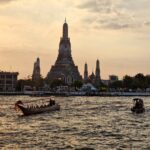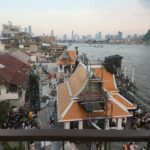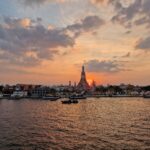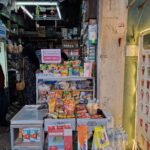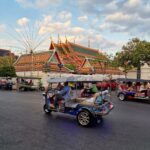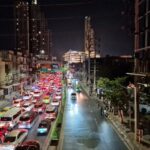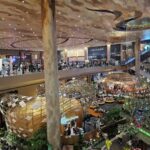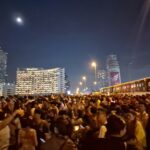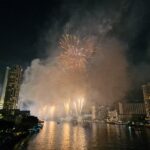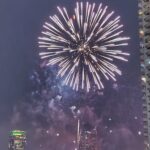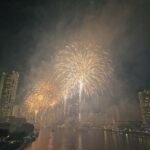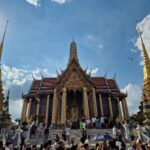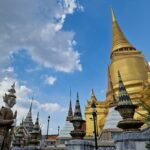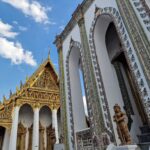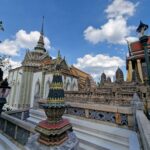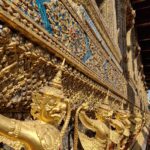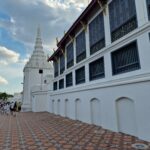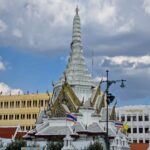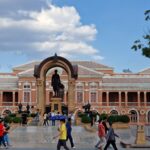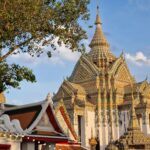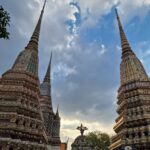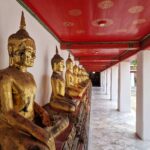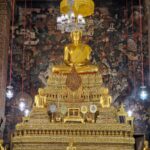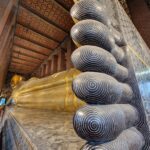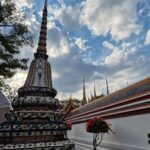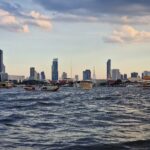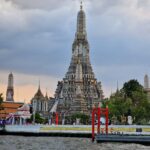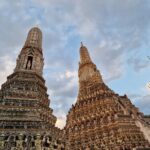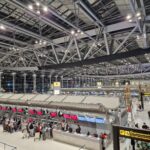Itinerary Summary:
Recommended Travel Time: October – March (check avg. temp. by month here)
Day 1: College Street and North Kolkata
Day 2: Park Street and Central Kolkata
Day 3: Gariahat and South Kolkata
Day 4: New Kolkata – Salt Lake and New Town
Travel Tips: Foods of Kolkata can broadly be classified as:
- Bengali, and within those as belonging originally to western Bengal or hailing more from eastern Bengal (large parts of modern day Bangladesh)
- Indo-Chinese, a unique amalgamation of Indian and Chinese cuisines that first came to the fore in the Tangra or Chinatown area of the city but has now been adopted across India and parts of the world with a large Indian/ Calcutta diaspora
- Continental, or the cuisine that has its roots in the large European and Anglo-Indian communities that once called Calcutta home, but have been steadily decreasing in numbers since the 1950s
- Mughlai, referring broadly to the cuisine developed in the kitchens of the Mughals or their vassal states, i.e., the Nawabs of Awadh, Bengal, or even Mysore
- Street Food, or a wide array of snacks or starters that can even constitute an entire meal, including ghugni, cutlets, chops, rolls, phuchka, jhal muri, ghoti gorom, telebhaja, bora, etc.
Before we start…
Writing a travel itinerary about a place as a tourist, we find, is a lot easier than writing about places that have familial or sentimental connections. In that sense, Kolkata has always been the toughest for us to write because we have never looked at it as a tourist destination, but always as a place we call Home.
Although there are many cities in the world with a sizeable Bengali population, and Dhaka might outrank Kolkata now in terms of population, but the City of Joy remains still the quintessential Bengali city, a city which every Bengali no matter where they’ve been born can relate to and associate with.
Another topic that every Bengali, no matter where they are in the world, can associate with is food. Therefore, when we thought of writing a post about our dear Kolkata, we thought of approaching it by means of the amazing cuisines that the city has to offer. And while some might say that we are biased to say that it has some of the best, if not the best foods in India, there can be doubt about the range of tastes and gastronomic delights available across the different areas of the city. And while we have shared some of our favourite haunts by geographies, it is by no means an exhaustive list, and exploring all the diverse cuisines that Kolkata has to offer would take many more days if not weeks!
Day 1: College Street and North Kolkata
1) Putiram: College Street is our favourite food hub in North Kolkata. The area around the street is filled with universities and colleges and is frequented by both current and former students. Start with a classical Bengali breakfast consisting of a mix of savoury and sweet options at Putiram at College square in the northern part of the city. This sweet shop has been a household name in Kolkata for more than a hundred years and a bite into any of the items on offer would convince the visitors why. We would definitely recommend going for the Radhaballabhi and Cholar Daal, Singhara (typical Bengali style samosa), Shor Bhaja, and Jol Bhora.
2) Paramount Juices: A stone’s throw away from Putiram, along another corner of College Square is Paramount Juices & Syrups. Like Putiram, this juice corner was established more than a century ago and has since served up cold refreshments that are either water or cream based, infused with a healthy dose of sweetened fruit or spice-based syrups. The Dab Sharbat and Rose Malai are our favourites, but the other choices on offer are excellent as well.
3) Indian Coffee House: Turning the corner once again around College Square from Paramount leads to Presidency University, Kolkata. Before crossing the road however, on the right-hand side in a dilapidated building, lies the Indian Coffee House. This coffee bar is one of the most iconic cafes of the city and has seen luminaries of the likes of Rabindranath Tagore, Satyajit Ray, Amartya Sen, amongst others, grace it as a haunt. We love the egg sandwiches, butter toast, omelettes, and sometimes also their coffee, but mostly visit it out of sentimentality.
4) Dilkhusha Cabin: For the uninitiated, the cabins of Kolkata are akin to the pubs and bars of Europe, but unlike the focus on drinks in the latter, the cabins of Kolkata focussed entirely on hearty dishes. Dilkhusha Cabin, located at the crossing of College Street and Mahatma Gandhi Road, is one of the last standing cabins from the 19th/early 20th century. It is a good stopping point for a healthy dose of nostalgia, cutlets (fish, chicken or mutton), and the iconic kabiraji (fish of course!).
5) Golbari: Taking a bus or tram across from Dilkhusha’s down College Street-Bidhan Sarani leads to Shyambazar and the prominently located New Punjabi Hotel alias Golbari. This iconic restaurant, once again more than a hundred years old (North Kolkata is steeped in history, culture, and crumbling buildings!) is famous for its Mutton Kosha or a spicy dry Goat meat curry. This dish is not for the faint of heart as it comes with a layer of oil on top of the delectable pieces of mutton and is accompanied by (oily) parathas – taste wise though, it’s pure bliss and worth the drive.
6) Girish Chandra Dey & Nakur Chandra Nandy: Finally, a visit to North Kolkata would be incomplete without ending on a sweet tooth, and it can’t get better than at Girish and Nakur. This hole in the wall Sandesh or Bengali sweetmeat shop has seen many a change in the city since 1844 from its location in the heart of North Kolkata. The love of its sweet amongst the city’s denizens, however, has remained just the same. Our favourites through the years have been the Chocolate Jolbhora Sandesh, Abar Khabo (available only on Saturdays) and the Nolen Gurer Sandesh(es).
Many other restaurants serving a range of cuisines such as Chowman, Oudh 1590, etc. have also opened shop across Kolkata, including in the north of the city. In addition, there are numerous other old school joints like the Mitra Cafe, Allen Kitchen, and Nalin Chandra Das that have their own set of unique dishes and sweets, and their ardent followers too!
Day 2: Park Street and Central Kolkata
1) Bar-B-Q: Park Street is our favourite food hub in North Kolkata. The area around the street is filled with universities and colleges and is frequented by both current and former students. Start with a classical Bengali breakfast consisting of a mix of savoury and sweet options at Putiram at College square in the northern part of the city. This sweet shop has been a household name in Kolkata for more than a hundred years and a bite into any of the items on offer would convince the visitors why. We would definitely recommend going for the Radhaballabhi and Cholar Daal, Singhara (typical Bengali style samosa), Shor Bhaja, and Jol Bhora.
2) Paramount Juices: A stone’s throw away from Putiram, along another corner of College Square is Paramount Juices & Syrups. Like Putiram, this juice corner was established more than a century ago and has since served up cold refreshments that are either water or cream based, infused with a healthy dose of sweetened fruit or spice-based syrups. The Dab Sharbat and Rose Malai are our favourites, but the other choices on offer are excellent as well.
3) Indian Coffee House: Turning the corner once again around College Square from Paramount leads to Presidency University, Kolkata. Before crossing the road however, on the right-hand side in a dilapidated building, lies the Indian Coffee House. This coffee bar is one of the most iconic cafes of the city and has seen luminaries of the likes of Rabindranath Tagore, Satyajit Ray, Amartya Sen, amongst others, grace it as a haunt. We love the egg sandwiches, butter toast, omelettes, and sometimes also their coffee, but mostly visit it out of sentimentality.
4) Dilkhusha Cabin: For the uninitiated, the cabins of Kolkata are akin to the pubs and bars of Europe, but unlike the focus on drinks in the latter, the cabins of Kolkata focussed entirely on hearty dishes. Dilkhusha Cabin, located at the crossing of College Street and Mahatma Gandhi Road, is one of the last standing cabins from the 19th/early 20th century. It is a good stopping point for a healthy dose of nostalgia, cutlets (fish, chicken or mutton), and the iconic kabiraji (fish of course!).
5) Golbari: Taking a bus or tram across from Dilkhusha’s down College Street-Bidhan Sarani leads to Shyambazar and the prominently located New Punjabi Hotel alias Golbari. This iconic restaurant, once again more than a hundred years old (North Kolkata is steeped in history, culture, and crumbling buildings!) is famous for its Mutton Kosha or a spicy dry Goat meat curry. This dish is not for the faint of heart as it comes with a layer of oil on top of the delectable pieces of mutton and is accompanied by (oily) parathas – taste wise though, it’s pure bliss and worth the drive.
6) Girish Chandra Dey & Nakur Chandra Nandy: Finally, a visit to North Kolkata would be incomplete without ending on a sweet tooth, and it can’t get better than at Girish and Nakur. This hole in the wall Sandesh or Bengali sweetmeat shop has seen many a change in the city since 1844 from its location in the heart of North Kolkata. The love of its sweet amongst the city’s denizens, however, has remained just the same. Our favourites through the years have been the Chocolate Jolbhora Sandesh, Abar Khabo (available only on Saturdays) and the Nolen Gurer Sandesh(es).
Many other restaurants serving a range of cuisines such as Chowman, Oudh 1590, etc. have also opened shop across Kolkata, including in the north of the city. In addition, there are numerous other old school joints like the Mitra Cafe, Allen Kitchen, and Nalin Chandra Das that have their own set of unique dishes and sweets, and their ardent followers too!
Day 3:
After a long day in Ayutthaya, we spent the better part of 31st December resting and getting prepared for a long night.
Wat Pho Pier: We had planned to head out after a late breakfast and embark on a tranquil boat ride, but the traffic situation in Bangkok and the difficulty in getting around meant that we had to change our plans and instead found ourselves walking around the areas around Wat Pho Pier, where fortuitously we were able to catch the last sunset of the year (and an amazing one at that!) against the majestic Wat Arun. We also went up to the upper-floors of one of the nearby restaurants which provided us with a birds-eye view of the western banks of the Chao Phraya river in Bangkok, and this is something we would highly recommend!
IconSiam: As light started to fade, the city’s streets became even more congested than normal, with everyone heading to one or the other destinations to ring-in the new year. In a way missing the boat ride turned out to be a blessing in disguise as we headed out earlier than we had planned towards IconSiam, the venue for the largest fireworks ceremony in Thailand. As getting a Grab became unthinkable, we decide to indulge in an adventure by hopping onto a tuktuk. Our driver was nothing short of an F1 driver as he navigated the bottlenecks along the way with expertise (often driving on the wrong side of the road when there was no oncoming traffic!) and got us to the mall faster than any other mode of transport would have! This in turn meant that we had a delightful few hours to loiter around the largest mall in Bangkok before the commencement of the fireworks ceremony.
King Taksin the Great Bridge: As the IconSiam mall swelled with revellers, we realized that getting a good spot to see the fireworks from inside the mall would be next-to-impossible. Instead, we sought refuge on the nearby King Taksin the Great Bridge. It turned out to be a great decision once again as when the night sky exploded with bursts of colour, it was the perfect place to capture the city’s skyline against a dazzling display of light and joy. What amazed us more than the fireworks however, was the attitude of the thousands of locals who had joined us on the bridge – despite there being hardly any place to sit or stand, people spent their time enjoying all kinds of foods and drinks, and without a single untoward incident of anger or tension!
New Year’s Eve in Bangkok was truly magical and surpassed all expectations and will remain etched in our memories for a while!
Food haunts of the day: Late morning breakfast at Staybridge Suites Thonglor, snacks at Fire Tiger Bubble Tea Iconsiam, and Dinner at Masala Art Iconsiam.
Day 4:
Our last day in Bangkok coincided with the first day of the new year, and we were eager to make the most of the last few hours that we had in this enchanting land by undertaking a walking tour of Bangkok’s most important landmarks.
The taxi drivers of Bangkok however, almost disrupted this plan, as it took us more than an hour to finally get a Grab. This along with the fact that the Thai spend their 1st of January visiting temples is something that we will advice all travellers to keep in mind when visiting Bangkok!
Grand Palace and Wat Phra Kaew: Our first stop on the walking tour was the Grand Palace and the Temple of the Emerald Buddha (Wat Phra Kaew). We were aptly dressed (both sites enforce a strict dress policy of covering shoulders and knees) and prepared to explore these iconic landmarks that stand as the epitome of Thailand’s rich cultural heritage. Standing in queue with hundreds of local Thais, we first visited the Wat, home to the revered Emerald Buddha, a sacred icon carved from a single piece of jade. Unfortunately, as photography inside the temple was not permitted, we couldn’t capture the idol or the beautiful sanctum sanctorum. Looking for a breath of fresh air, we spent some time walking around the grounds of the Grand Palace, exploring the various structures like the Phra Mondop, the library containing sacred Buddhist scriptures, the Phra Sri Rattana Chedi, a golden stupa housing relics of the Buddha, and the miniature sculpture of Angkor Wat.
Wat Pho: A short walk from the Grand Palace brought us to one of Bangkok’s most revered temples, Wat Pho. This sprawling temple complex, was an amalgamation of history, spirituality, and artistry. Entering through the temple’s towering gates, we were fortunate to witness and participate in a blessing ceremony on new year’s day by the local abbot. The temple’s spacious courtyards, ornate chedis, intricate murals, and Chinese statues are a precursor to the main highlight of Wat Pho – the magnificent Reclining Buddha. 46 meters long and covered in shimmering gold leaf, this colossal statue was a sight to behold. Outside, the inner sanctum, but within the temple grounds, lay the Thai Massage School. While we couldn’t visit it due to a paucity of time, it made us reflect on the deep impact that religion has played and continues to play in every day life in Thailand.
Wat Arun: Our final stop of the walking tour involved a walk from the Wat Pho to the nearby Tha Tian pier followed by a quick “khlong” boat ride across the Chao Phraya. As soon as we disembarked from the ferry, we found ourselves in the majestic shadow of Wat Arun‘s towering spires. We walked around the outer perimeter of the “temple of dawn”, admiring the intricate porcelain mosaics that adorned the temple’s façade. The unique feature of the temple was that the “prang” depicted scenes from both Hindu and Buddhist mythology, making it distinct to the other Buddhist temples that we had encountered on our travels across Thailand thus far. Having explored the temple, we walked along with our amazing guide (DJ – himself a former monk) through the neighbouring markets and residential areas to the Itsaraphap metro station and took the clean and organized (though a little expensive) Bangkok metro service to our hotel via Sukhumvit.
Following a quick change of clothes and a refreshing shower in our hotel, we decided to leave for the airport for our flight back. As our plane took off into the Thai night sky leaving behind the bright lights of Bangkok, we felt a sense of fulfillment and satisfaction from having immersed ourselves in the rich cultural tapestry of Thailand, and for having ushered in the new year in environs whose memories we will carry with us – from the warmth of the people to the cleanliness of the cities to the central role of spirituality in day-to-day life. “Khawp khun” and “jur gan” Bangkok, until next time!
Food haunts of the day: Late morning breakfast at Staybridge Suites Thonglor, snacks from street vendors on the way, and Dinner at Burger King Thonglor.

